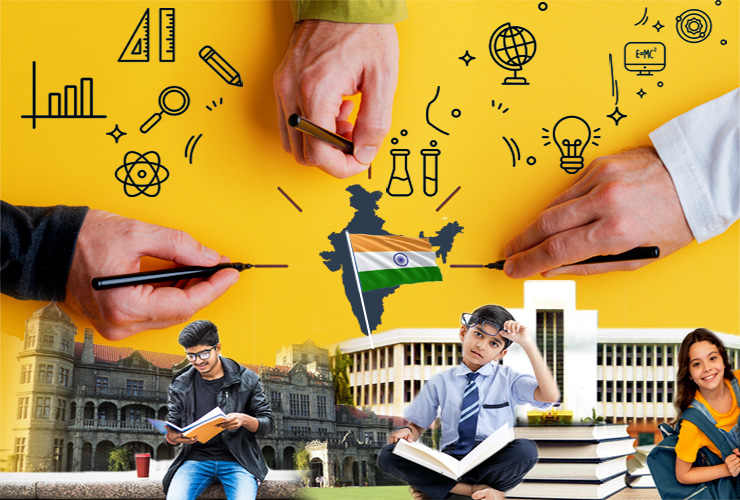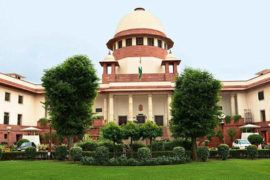‘Education’ plays a significant and remedial role in improving and balancing the country’s socio-economic framework.
The education system in India dates back to ancient times where children were taught in Gurukuls. The Guru used to teach as per the interest of the child, subjects varying from Sanskrit to the holy scriptures and from Mathematics to Metaphysics.
At that time, the Guru-Shishya system was the only means of education in India The Indian education system was enhanced with the emergence of universities such as Nalanda, Takshashila, Manassa, Ujjain, and Vikramshila.
The modern school education system was brought to India originally by Lord Thomas Babington Macaulay in the 1830s.
The Uttar Pradesh Board of High School and Intermediate Education was the first Board established in India in 1921. Then, the Board of High School and Intermediate Education, Rajputana, was set up in 1929.
Eventually, in 1952, the Central Board of Secondary Education (CBSE), a national level education board was introduced in India.
Topics Covered:
- Present Education System In India
- Educational Statistics in India
- Major Education Initiatives by Government
- National Policy on Education
- New Education Policy Consultation
- National Education Policy (NEP) 2020
- Principles of National Education Policy (NEP) 2020
- A vision of National Education Policy (NEP) 2020
- Objectives and Reforms of the National Education Policy (NEP) 2020
- Conclusion
Present Education System In India
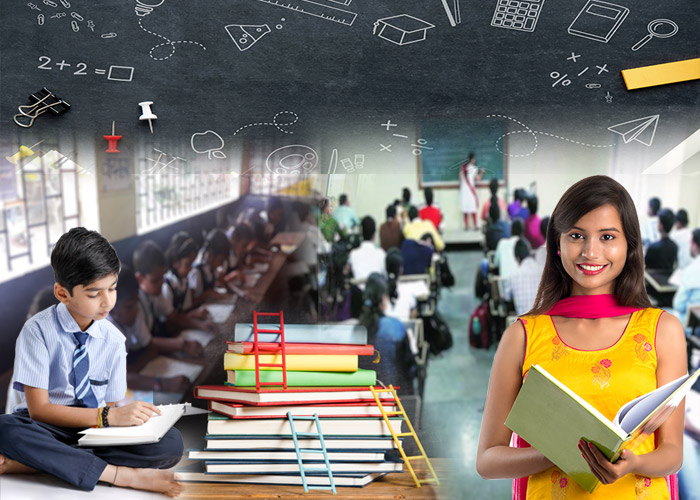
Since the early days of Independence in 1945, the Indian Government has always focused on improving the literacy rate.
Free and Compulsory Education is made as to the Fundamental Right to children aged 6 to 14, under various articles of the Indian Constitution.
Education in India is primarily provided by government schools, government-aided private schools, private schools, and international schools.
According to the Education Statistical Yearbook 2019, there are around 15,22,346 recognized primary, secondary, and higher secondary schools in India.
As of 2020, India has over 1,000 universities and 52,627 colleges.
The approximate ratio of private schools to public schools in India is 5:7. The private school system is competing with the public schools at the primary and secondary level, with 29% of students in the 6 to 14 age group receiving private education.
However, the private schools in India are regulated by the government in terms of what they can teach and what form they can operate alongside other aspects.
Levels of Education
The Indian education system is divided into different levels as following
- Pre-primary Education
- Pre-nursery
- Nursery
- LKG
- UKG
- Primary Education (The primary education is categorized into two parts, namely)
- Lower Primary – Class I to IV
- Upper Primary – Class V – VIII
- Secondary Education- Class IX – X
- Higher Secondary Education – Grade 11 and 12
- Higher Education:
- Under-Graduate or Bachelor’s Level Education
- Post-Graduate or Master’s Level Education
- Doctoral Studies or Ph.D. Level Education
- Vocational Education and Training
- Diploma Programs
Structure of the Indian Education System
The central board and most of the state boards uniformly follow the “10+2” structure of education. In this structure, the first 10 years is schooling, the next 2 years is higher secondary education and then followed by graduation.The first 10 years are further categorized into 4 years of primary education and 6 years of High School.
The Education Commission of 1964–66 has recommended the 10+2 pattern.
Educational Statistics in India

India holds a prominent position in the global education industry and has many accomplishments to celebrate.
There are over 250 million school going students in India, the highest in the world. Over 70 million children attend pre-primary, primary school with a consistent increase in primary enrolment.
The Right to Education Act has played a crucial role in reducing the number of Out of School Children (OOSC) aged 6 to 14 years, from 13.46 million in 2006 to 6 million in 2014.
Moreover, India has one of the largest networks of higher education institutions in India. There were around 37.4 million students enrolled in higher education in FY19 with Gross Enrolment Ratio of 26.3%.
According to UNESCO’s latest report, the literacy rate among the population aged 15-24 years is 91.6%; among 15 years and older, it is 74.37%; and among 65 years and older, it is 45.38%.
As per the market estimates, the Indian education market size is estimated to almost double to USD 180 billion by 2020, from USD 101.1 billion in 2019.
Major Education Initiatives by Government
Following are some of the recent initiatives taken by the Government of India (GOI)
- In May 2020, Government launched PM eVIDYA, a program for multi-mode access to digital/online education
- The government allocated INR 59,845 crore for Department of School Education and Literacy in Union Budget 2020-21
- India announced Revitalizing Infrastructure and Systems in Education (RISE) by 2022 with a proposed outlay of INR 3,000 crore
- Under Union Budget 2020-21, the government proposed apprenticeship embedded degree/diploma courses by March 2021 in about 150 higher educational institutions
- Around two crore candidates completed training in 254,897 registered training centers under the Pradhan Mantri Gramin Digital Saksharta Abhiyan (PMGDISHA), as of February 2020
- India promoted a new scheme ‘Study in India’ to attract foreign students to higher educational institutions
- With an outlay of INR 6,655 crore, the government approved Skills Acquisition and Knowledge Awareness for Livelihood Promotion (SANKALP) and Skill Strengthening for Industrial Value Enhancement (STRIVE) in a bid to boost the Skill India Mission
- The GOI initiated the Ek Bharat Shrestha Bharat (EBSB) campaign to increase engagement between states, union territories, central ministries, educational institutions and public
- Introduction of ‘Beti Bachao, Beti Padhao’ program in October 2014
- Introduction of Kasturba Gandhi Balika Vidyalaya (KGBV) scheme in August 2014
Evolution of National Education Policy in India

The achievements and progress in education being enjoyed today can be attributed to the vision of Maulana Abul Kalam Azad, the first Minister of Education in India.
Abul Kalam emphasized the need for robust governance by the centre over education throughout the country by implementing a uniform educational system.
In 1961, the Government of Jawaharlal Nehru formed the ‘National Council of Educational Research and Training (NCERT)‘, as an autonomous organization to formulate and implement education policies.
However, the urgency for an education policy was first felt in 1964 when Congress MP Siddheshwar Prasad criticized the then government for lacking a vision and philosophy for education.
Subsequently, based on the recommendations of the Kothari Commission (1964–1966), the Government of PM Indira Gandhi announced the first National Policy on Education (NPE) in 1968. The Policy was prepared to improve the quality of education in the country and provide education to all the citizens.

National Policy on Education 1968
- Proposed equal educational opportunities
- Free and compulsory education for all children till the age of 14
- Specialized qualification of teachers
- Three-language formula in secondary education, English, Hindi and regional language
- Increasing education spending to 6% of the national income
- Uniform education structure: 10+2 pattern
In 1986, the Government of PM Rajiv Gandhi introduced the second National Policy on Education.
National Policy on Education 1986
- High emphasis on the removal of disparities and equalize educational opportunity
- “Child-centered Approach” in primary education
- “Operation Blackboard” to improve primary schools nationwide
- Creation of the “rural university” model
- Budget allocated to be 6% of GDP
The 1986 NPE was revised in 1992 by the Government of PM PV Narsimha Rao. The Programme of Action (PoA) 1992 has called for a common entrance examination across India for admission to professional and technical programs. In 2005, Former PM Manmohan Singh adopted a new policy based on the “Common Minimum Programme” of his United Progressive Alliance (UPA) government.
After the 1986 NPE, significant socio-economic changes have taken place in India, emphasizing the need for the education sector to gear itself towards the demands of the 21st century.
In a bid to prepare a new National Education Policy (NEP), the Ministry of Human Resource Development (MHRD) released the Draft New Education Policy (DNEP) in 2019, followed by several public consultations.
In July 2020, the Union Cabinet of India has approved the third National Education Policy 2020 (NEP 2020), replacing the previous NPE 1986.
New Education Policy Consultation

In January 2015, the government had initiated a consultation process to formulate a New Education Policy.
The Committee for the preparation of the DNEP has taken consideration of expert opinions, field experiences, empirical research, and stakeholder feedback for an inclusive, participatory and holistic approach.
The draft NEP is primarily based on the foundational pillars, namely Access, Affordability, Equity, Quality, and Accountability.
The Committee received over 2 lakh suggestions from 2.5 lakh gram panchayats, 6,600 blocks, 6,000 Urban Local Bodies (ULBs), and 676 districts.
After the submission of the Draft Report, the State Governments and various Ministries were invited to give their opinions on the Draft National Education Policy 2019.
The Committee held meetings with State Education Secretaries of School Education and State Secretaries of Higher and Technical Education. An Education Dialogue was also organized with MP’s of Andhra Pradesh, Telangana, Tamil Nadu, Puducherry, Kerala, Karnataka, and Odisha.
National Education Policy (NEP) 2020
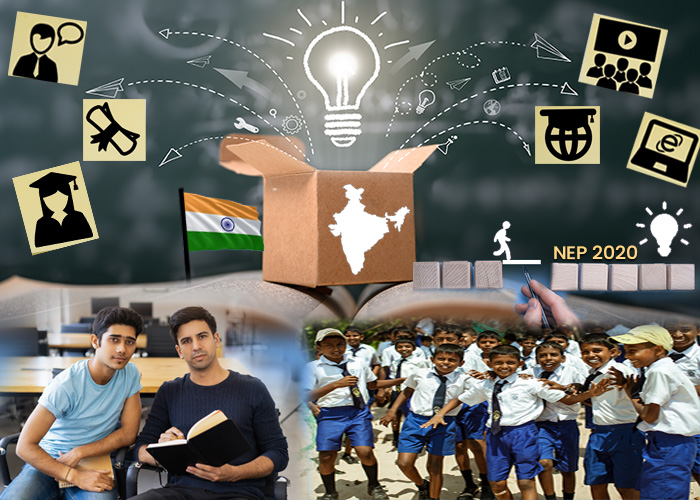
On 29th July 2020, the Government of PM Narendra Modi approved the ‘National Education Policy 2020 (NEP 2020)‘, with an aim to transform India’s education system by 2040.
The NEP, after a gap of 34 years, has put in place a slew of education reforms in both the higher education and school sector. It intends to bring a systematic reform in the education sector rather than an incremental reform.
The NEP 2020 is the first education policy of the 21st century and aims to address our country’s current developmental imperatives.
The Policy proposes the revision and revamping of all aspects of the current education structure, including its regulation and governance, to forge a new education system that is on par with the aspirational objectives of 21stcentury education.
The New Policy also renamed the Ministry of Human Resource Development (MHRD) as the Ministry of Education in a bid to bring the focus back on education and learning.
If implemented as per the plan, the new norms will reduce regulatory hassles, promote autonomy, and benefit students, education providers and the labor market.
Principles of National Education Policy (NEP) 2020
The foundational principles of NEP 2020 are Access, Equity, Quality, Affordability, and Accountability. The Policy believes that the education system should develop good human beings with rational thinking, compassion, empathy, courage, resilience, scientific temper, creative imagination, and ethical values.
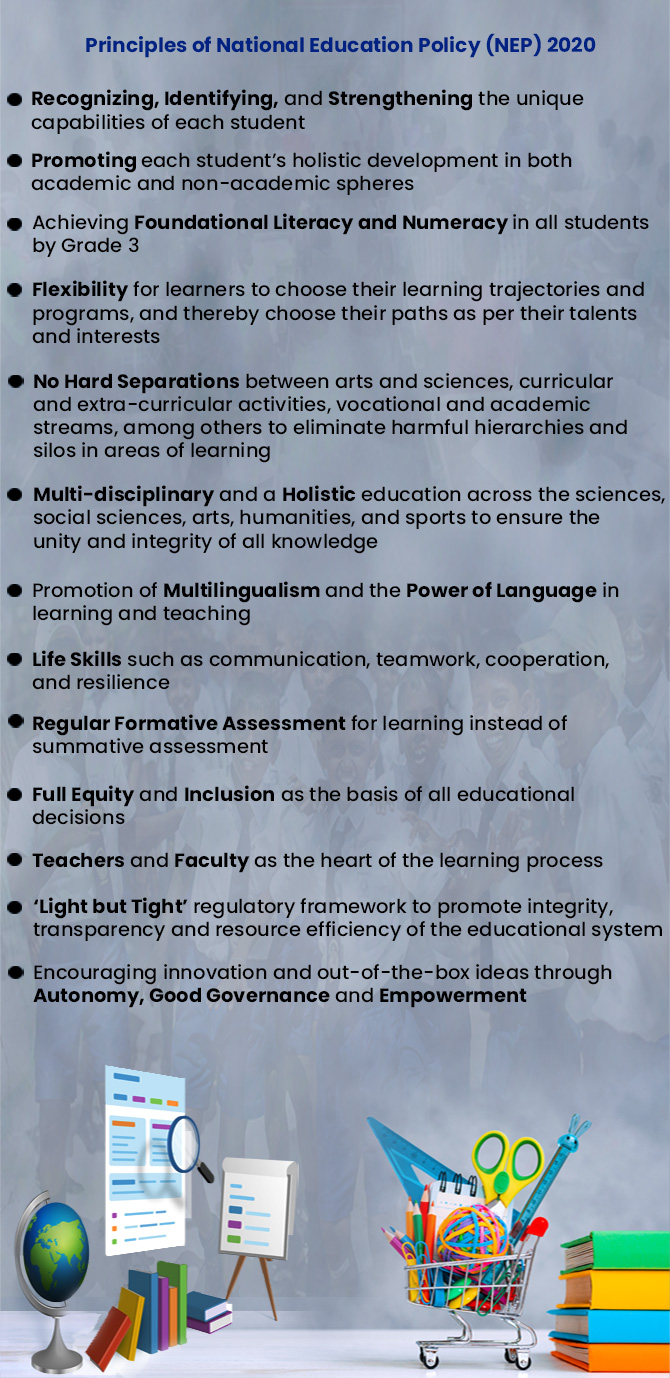
The fundamental principles of the Policy are
- Recognizing, Identifying, and Strengthening the unique capabilities of each student
- Promoting each student’s holistic development in both academic and non-academic spheres
- Achieving Foundational Literacy and Numeracy in all students by Grade 3
- Flexibility for learners to choose their learning trajectories and programs, and thereby choose their paths as per their talents and interests
- No hard separations between arts and sciences, curricular and extra-curricular activities, vocational and academic streams, among others to eliminate harmful hierarchies and silos in areas of learning
- Multi-disciplinary and a holistic education across the sciences, social sciences, arts, humanities, and sports to ensure the unity and integrity of all knowledge
- Promotion of Multilingualism and the Power of Language in learning and teaching
- Life Skills such as communication, teamwork, cooperation, and resilience
- Regular Formative Assessment for learning instead of summative assessment
- Full Equity and Inclusion as the basis of all educational decisions
- Teachers and Faculty as the heart of the learning process
- ‘Light but Tight’ regulatory framework to promote integrity, transparency and resource efficiency of the educational system
- Encouraging innovation and out-of-the-box ideas through Autonomy, Good Governance and Empowerment
A Vision of National Education Policy (NEP) 2020
National Education Policy 2020 envisions an India-centric education system that provides high-quality education to all, thereby transforming India sustainable into an equitable and vibrant knowledge society in the world.
Objectives and Reforms of National Education Policy (NEP) 2020
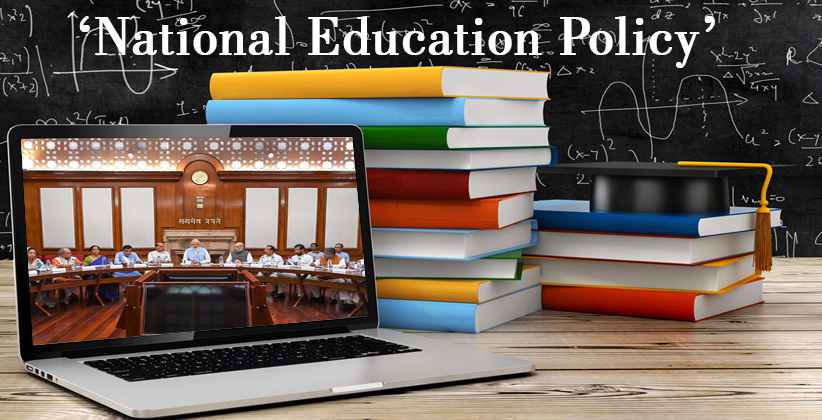
The NEP 2020 paves for numerous significant changes in the Indian education system. The changes and objectives of NEP 2020 are as follows
1) School Education
- The current ‘10+2’ structure covering ages 6-18 to be replaced by a new Pedagogical and Curricular Structure of ‘5+3+3+4’ corresponding to ages 3-18
- Instead of annual examinations every year, students will now only attend exams in Class 3, 5 and 8
- Class 10 and 12 Board Exams will be conducted as usual, but the exams will be made easier by allowing students to take exams twice a year. The exam will have two parts, Objective and Descriptive
- Universal standards of learning and regulations in public and private schools
- Vocational Education and coding will be introduced from Class 6
- Mother tongue or regional language to be the medium of instruction at least up to Class 5 and preferably till Class 8
- Report cards will be a 360-degree Holistic Progress Card that will give a comprehensive report on skills and capabilities instead of just marks and grades
- Focus on the curriculum to core concepts
- Universalization of education from Early Childhood Care Education (ECCE) to Secondary Level
- Achieving 100% Gross Enrolment Ratio (GER) in school education by 2030
- New National Curriculum Framework for Early Childhood Educator (ECE), schools, teachers and adult students
- Open Schooling System to bring two crore ‘Out Of School Children’ back into the mainstream
- Deployment of counselors and social workers to improve student’s mental health
- Midday Meal Scheme to be extended to include breakfasts
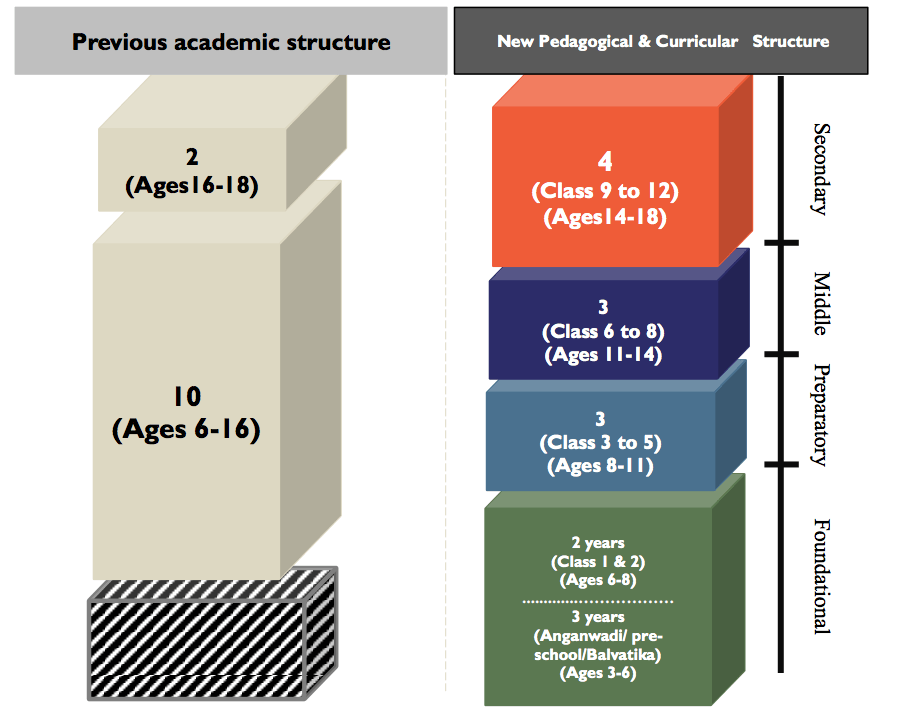
2) Higher Education
- Holistic and Multi-disciplinary education in an undergraduate program with multiple exit options where the bachelor’s degree can be 3 or 4 years
- Phil. (Master of Philosophy) courses to be discontinued
- PG programs can be 1 or 2 years
- The National Testing Agency will conduct entrance examinations for admissions to universities across the country, apart from the JEE Main and NEET
- Establishment of Academic Bank of Credits to facilitate Transfer of Credits
- Setting up Multidisciplinary Education and Research Universities (MERUs) as models of best multi-disciplinary education of global standards
- Establishment of National Research Foundation, an apex body for fostering a strong research culture and building research capacity across higher education
- Establishment of Higher Education Council of India (HECI) to regulate higher education by preparing the same set of regulations, accreditation and academic standards for private and public institutions. The HECI will have four independent verticals, namely-
- National Higher Education Regulatory Council (NHERC) for the regulation of higher education, except medical and legal education
- General Education Council (GEC) for setting standards
- Higher Education Grants Council (HEGC) for funding and financing of colleges and universities
- National Accreditation Council (NAC) for accreditation
- The HECI will replace the existing National Council for Teacher Education (NCTE), All India Council for Technical Education (AICTE) and the University Grants Commission (UGC)
- Phasing out the ‘Affiliation System’ at university level over a period of 15 years
- Increasing Gross Enrolment Ratio (GER) in higher education from the current 26.3% to 50% by 2035
- Adding 3.5 crore seats in higher education
3) Teacher Education
- By 2023, the minimum qualification for teachers will be 4-year integrated B.Ed. degree
- Emphasis on strengthening and transparency of the teacher recruitment process
- NCTE to formulate a new and comprehensive National Curriculum Framework for Teacher Education (NCFTE) 2021
- NCTE to frame National Professional Standards for Teachers (NPST) 2022
4) Other Major Objectives
- Establishment of National Education Commission
- Establishment of Special Education Zones (SEZs) to improve education among underrepresented groups in disadvantaged regions
- Gender Inclusion Fund, for improving and providing education for female and transgender children
- Establishment of National Educational Technology Forum (NETF), a platform to facilitate the free exchange of ideas on technology usage in education
- National Assessment Centre- ‘PARAKH’ will assess the students
- Establishment of new language institutions such as the Indian Institute of Translation and Interpretation and the National Institute/ Institutes for Pali, Persian and Prakrit
- Establishment of National Mission for Mentoring, National Book Promotion Policy, National Mission on Foundational Literacy and Numeracy
- Increasing the education expenditure from the current 4.6% to 6% of the GDP at the earliest
- Massive usage of technology in education planning, teaching, learning and assessment
National Education Policy (NEP) – Making it Happen
The reforms and objectives of the NEP 2020 are provided from a broader perspective, and it’s not mandatory for state governments to follow them.
For instance, Tamil Nadu does not follow the three-language formula prescribed in the first education policy in 1968.
So, as both central and state governments can make their own laws on education, the proposed reforms can only be implemented if both the governments work collaboratively.
However, this will not happen immediately. The Government of PM Narendra Modi has set a target of 2040 to accomplish the entire Policy.
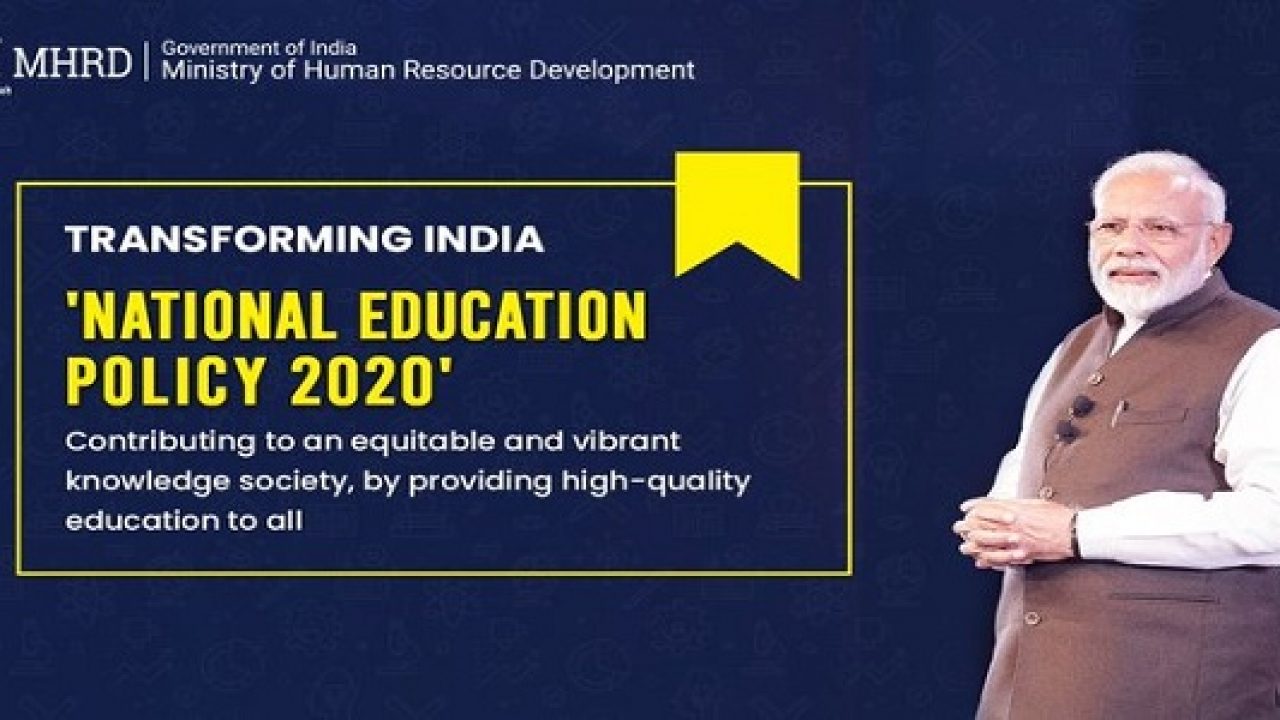
Moreover, sufficient funding is imperative for the full implementation of the NEP 2020 as a shortage of funds crippled the 1968 NPE.
The central and state governments should substantially increase the spending on education to attain the goals with excellence and the corresponding multitude of socio-economic benefits.
The Indian Government is planning to organize subject-wise committees with members from relevant central and state ministries in order to develop implementation plans for each aspect of NEP.
They will list action plans for multiple bodies, including the HRD Ministry, NCERT, State Education Departments, Central Advisory Board of Education, School Boards, and National Testing Agency, among others.
Yearly joint reviews of the progress of the implementation of the Policy will be conducted against the targets set.
In 2030, a comprehensive review of the status of the implementation of the Policy in its entirety will be conducted.
In the decade of 2030-40, the whole Policy will be in an operational mode, followed by another comprehensive review.
In Conclusion

National Education Policy (NEP) 2020 is a big revolution replacing the 34-year-old policy idea and envisioning to bring about the much-needed modification in the Indian Education System. The Policy has maintained a delicate balance between the traditions and the interdisciplinary approach, which is the need of the 21st century.
NEP has the potential to revamp the skills of the youth of our country and has all the right tools that are needed to be competitive at the global level.
Needless to say, the New Education Policy is undoubtedly a progressive and ambitious policy that India is waiting for. All the Best!!
More News Articles:
- Cashless Economy in India
- Profitable Business Ideas in India
- Nepotism in India
- Farm Bill 2020 in India Pros and Cons: All you should know
